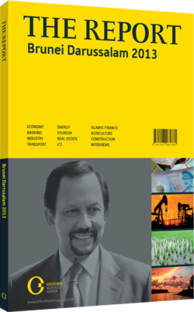Eye on conservation: Understanding and protecting the local environment
Blessed with great hydrocarbons wealth and a population of 425,000 set in 5770 sq km, Brunei Darussalam has never had to exploit its natural biodiversity to sustain growth in its contemporary history. Logging and oil palm plantation, two of the greatest causes of deforestation in the region, have no real place in its economy, leaving an estimated 70% of the country as primary forest. As such, it sets the highest standard for rainforest and biodiversity preservation in South-east Asia, where the UN Food and Agriculture Organisation’s Forestry Department estimates 10m ha of forest have been lost in the past 15 years. In 2007 the Sultanate committed 58% of the country to the Heart of Borneo Initiative, a WWF-backed project involving the governments of Brunei, Malaysia and Indonesia to preserve 220,000 sq km of contiguous rainforest on Borneo.
BIODIVERSITY: This makes Brunei Darussalam an intriguing place for scientists and ecotourists alike. Largely untouched by humans, the Bruneian rainforest is a mosaic of interlinking ecosystems, from mangrove and fresh water and peat swamp in the lowlands to the north, to tropical heath, mixed dipterocarp and montane forests in the highlands to the south. These diverse habitats are home to over 6000 species of plants, 455 species of birds, about 221 mammals and 73 reptiles. Included are the endemic proboscis monkey, famed for its enormous nasal appendage, and the estuarine crocodile, the Bornean sun bear and the recently discovered melanistic clouded leopard.
RESEARCH: Whilst the Sultanate’s rainforests are home to this diversity, its full extent remains uncharted. Increasing understanding about the rainforest will play an essential role in furthering preservation and conservation of this precious resource. Joseph Charles, a senior lecturer at Universiti Brunei Darussalam’s (UBD) Faculty of Science, told OBG that “there are still big gaps in our knowledge of Bruneian wildlife. Plugging these gaps will be so important for increasing public awareness of biodiversity, which in turn will be completely essential to the success of conservation efforts.”
Charles, along with a team of Bruneian students and biodiversity experts from UBD and a few specialists from the Heart of Borneo Initiative, is part of the Sungei Ingei Faunal Biodiversity Expedition, a research project into Sungei Ingei, an isolated area of pristine jungle in southern Belait district, near the Sarawak border. The goal of this expedition is to chart and record the wildlife in this region, providing comprehensive data that will be vital for future protection of the animals, plants and ecosystems. The Ingei Expedition has asked the government to convert 18,000 ha of the site into a wildlife sanctuary, with a surrounding buffer zone for multiple uses, including ecotourism.
This represents a significant opportunity. Demand for ecotourism is growing at 15% per year, according to the UN World Tourism Organisation, and Brunei’s jungle forestry has excellent potential for niche research tourism. Its diversity is already attracting scholars from across the globe. Next year Oxford University will begin a three-year botanical survey of some local forests together with the Forestry Department and UBD.
UBD also hosts scientific exchanges with seven other international universities through the International Consortium of Universities for the Study of Biodiversity and Environment, which was launched in 2011. The Sultanate has yet to start capitalising on this by charging fees for research tourism, but this will be a logical step and an important fillip for preservation efforts.
POACHING: However, Brunei first needs to tackle illegal poaching and logging. With roads being built into the forests and a thriving trans-Borneo black market trade in meat, pelts and Agarwood, this is a growing concern. One proposed solution is employing the indigenous Iban people as game wardens. This has the dual benefit of creating employment and nurturing traditional lifestyles for the Iban, which are threatened by migration to urban centres. As Charles adds, “What started as a purely scientific research project to put Brunei on the global biodiversity map has evolved into the preservation of traditional indigenous cultures too.”
You have reached the limit of premium articles you can view for free.
Choose from the options below to purchase print or digital editions of our Reports. You can also purchase a website subscription giving you unlimited access to all of our Reports online for 12 months.
If you have already purchased this Report or have a website subscription, please login to continue.

